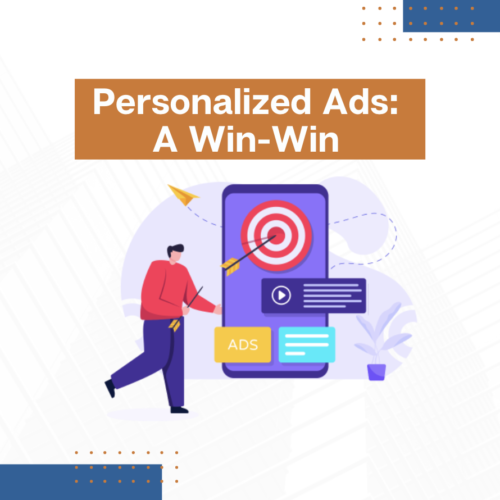27 Apr Personalized Ads: A Win-Win

Consumers are constantly bombarded with countless ads every day. Brands have to compete with each other to try to get the attention and money of these consumers. But how can a company cut through the abundance of clutter and win over a prospective customer? The answer is simple, personalized ads.
Personalized ads allow a company to use previously collected data to influence their ad selection for each individual customer by creating a personalized marketing message. Data can be pulled from a user’s visits to apps or sites, activities, previous search queries, and location. By looking at a user’s tendencies, companies can better adjust their ads to be more relevant and successful. Adlucent’s study on consumer preferences revealed that 71% of respondents prefer ads that are tailored to their personal shopping habits. Additionally, 75% desire fewer, but more personalized ads. It is evident that users want a relevant ad experience as opposed to more general ads that do not pertain to them.
Company Benefits
A company that utilizes personalized ads in its marketing plan sees improved results. Targeting a more relevant group of people with ads personalized to them is a great way to improve:
- Customer retention
- Increased conversion rate
- Customer engagement
- Higher revenue
- Brand Affinity
- Customer loyalty
- Increased ROI
- Higher CTR
- Lower CPA
Consumer Benefits
Personalized ads are advantageous for consumers too. They can improve a user’s overall experience overall and benefit them in the following ways.
- Tailored content experience
- Feeling of importance
- Easier/quicker shopping
How to Implement
When starting to introduce personalized ads to consumers it is important to make sure that the data variables being looked at are accurate and the best for determining customer interest. Failure to correctly identify the right ads to display to consumers will deter them from the company and a possible customer will be lost. However, when done right, personalized ads can be the perfect way to get relevant content in front of the correct people and lead to sales.
To start off and begin to understand how to create more personalized ads, a company can turn to search engines like Google. Google Ads offers machine learning and the ability to have descriptions and headlines for ads autogenerated based on data collected about customers. Additionally, Google has interest-based audiences that can be used for display/video ads. They can also be used for bid adjustments within search to make sure the ads are hitting the most relevant group of people. Brands can choose to pay more to show their ads to a person interested in the subject.
Similar to Google, a company can exercise personalized ads on social platforms that use interest-based categories to ensure their ads are being shown to people interested in certain topics. Another common way is through emails reminding customers of things they left in their carts or suggestions of items or services that the company thinks they would be interested in. Finally, companies can use personalized ads through a short message when a customer revisits the webpage, it is personal and makes the user feel like they are valued and important. There are a variety of other ways to display personalized ads. As soon as a brand figures out which resonates the most with its customers, it will see optimal success.
Personalized ads are powerful in the marketing landscape. They are not only good for the advertiser but the implementation of this ad type could lead to a lower volume of generic ads for the consumer in the future because advertisers are willing to pay more for more personalized ads and have less need to cast as wide of a net to irrelevant people. Get ahead of the curve and start using personalized ads with the help of CSK Advertising. Contact us today to get started!

